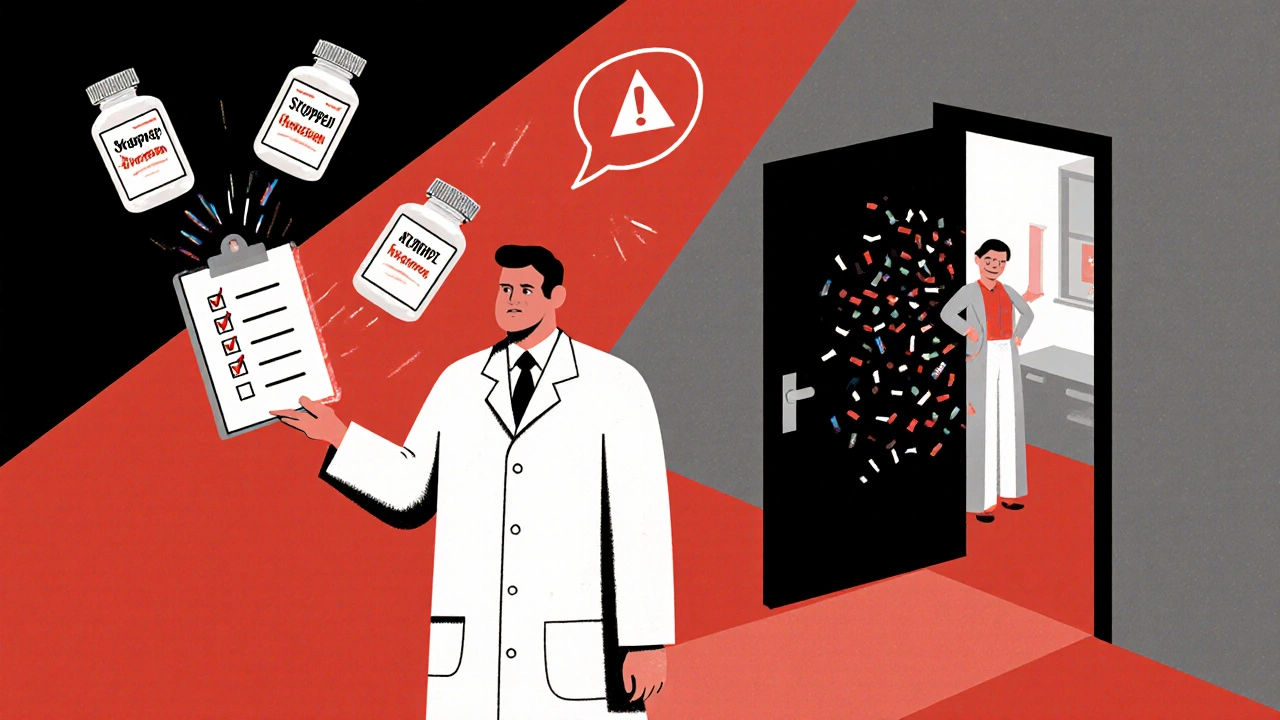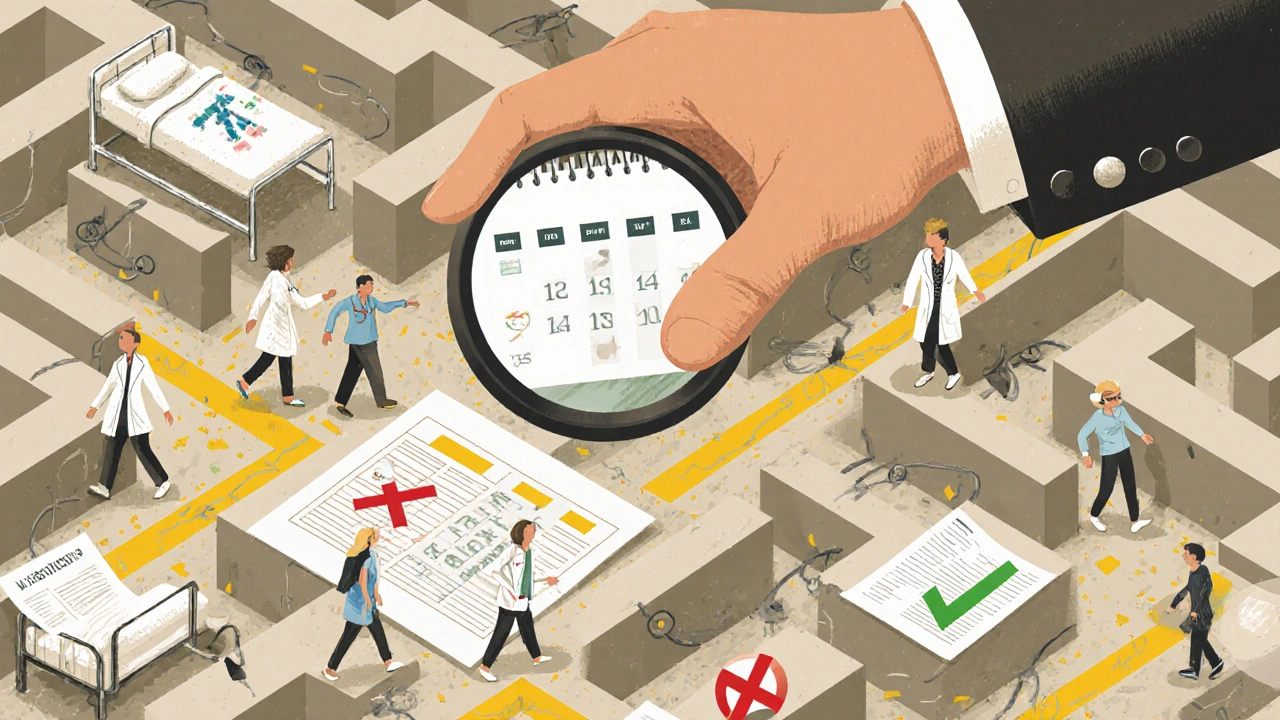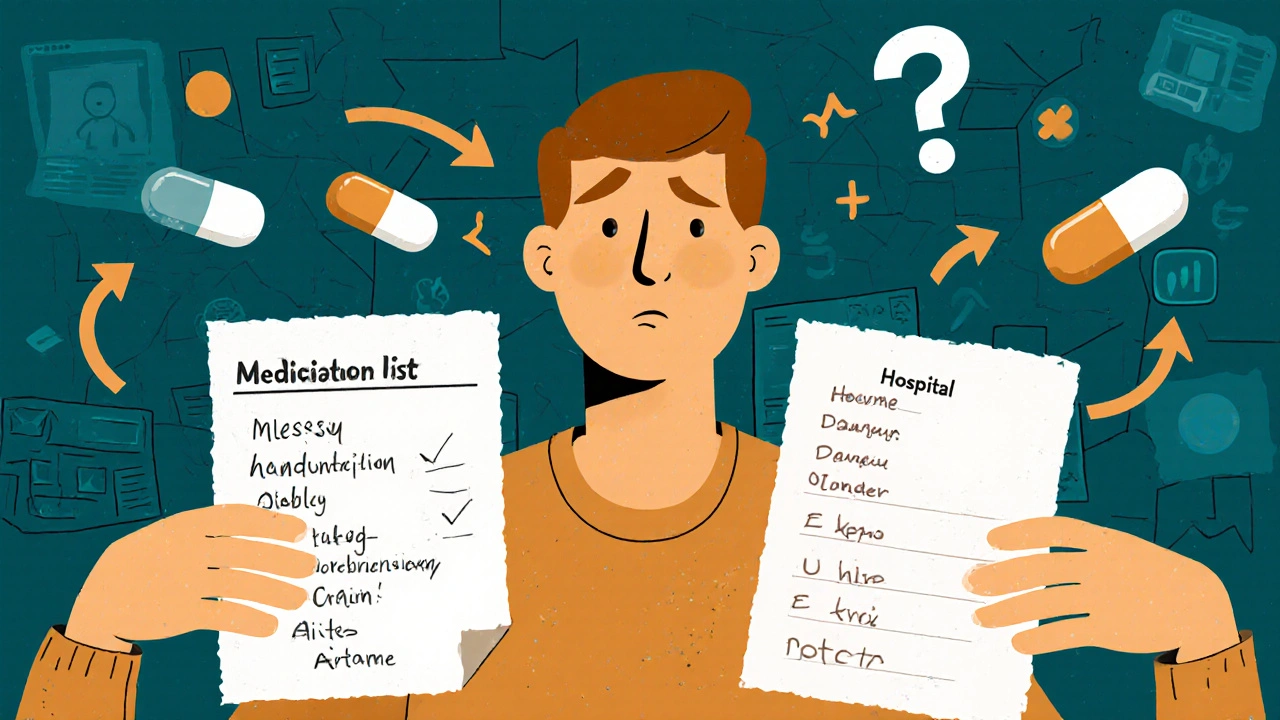When you leave the hospital, your medication list can look completely different from what you were taking at home. Maybe they stopped your blood pressure pill. Maybe they added a new antibiotic. Maybe they changed the dose of your diabetes medicine. All of this happens for a reason - but if no one checks to make sure these changes make sense in your everyday life, you’re at serious risk. About one in three patients experience a medication error in the first 30 days after leaving the hospital. Many of these errors are preventable - and the key is coordination.
Why Medication Reconciliation Matters
Medication reconciliation isn’t just paperwork. It’s a safety check. It means comparing the list of medicines you were taking before you went into the hospital with the list you’re leaving with. This process is officially called NQF 0097, or CARE-1, and it’s required by Medicare and Medicaid. The goal? To catch mistakes like missing pills, wrong doses, or drugs that shouldn’t be taken together.Here’s the reality: patients often go into the hospital on 5, 7, even 10 different medications. During their stay, doctors adjust them - stopping some, starting others, changing doses. But when you get home, your primary care doctor might not know what changed. Your pharmacist might not have the full picture. And you? You’re left trying to remember what you were told.
Studies show that 30% to 70% of patients have at least one discrepancy between their home meds and hospital discharge meds. These aren’t small mistakes. They lead to 18% to 50% of all medication errors after discharge. And those errors? They send people right back to the hospital. In fact, medication-related readmissions cost the U.S. healthcare system over $21 billion every year.
What Happens During Reconciliation
A proper medication reconciliation isn’t just a quick glance at a printout. It’s a detailed process that includes these steps:- Collect your full home medication list - including prescriptions, over-the-counter drugs, vitamins, supplements, eye drops, creams, and herbal products. Don’t skip anything. Even that fish oil you take daily matters.
- Compare it to the discharge list - every change made in the hospital must be documented and explained.
- Identify discrepancies - Is a pill missing? Is the dose higher? Is a new drug interacting with something you already take?
- Resolve them - Who made the change? Why? Should it stay? Should it be reversed? This decision needs to be clear and communicated to everyone involved.
- Document and share - The final list must be in your outpatient chart, given to you in writing, and shared with your primary care provider and pharmacist.
The American Society of Health-System Pharmacists (ASHP) calls this a “complex process that impacts all patients as they move through all health care settings.” It’s not optional. It’s essential.
Who Should Do It - And Why Pharmacists Are the Best Choice
You might assume your doctor handles this. But research shows that’s not enough. A 2023 study in the Journal of the American College of Clinical Pharmacy found that when pharmacists led the reconciliation process, medication discrepancies dropped by 32.7%. Readmissions fell by 28.3% compared to when doctors or nurses did it alone.Why? Pharmacists are trained to spot drug interactions, dosage errors, and adherence issues. They know how medications behave in the body. They also spend time talking directly to patients - asking, “Are you actually taking this pill?” - which reveals gaps no chart can show. One study found that using pharmacy records, prescription history, and direct patient interviews improved accuracy by 41% over standard provider documentation.
Unfortunately, many hospitals still rely on overworked nurses or physicians who are juggling dozens of patients. That’s why pharmacist-led programs are becoming the gold standard. Hospitals that embed pharmacists in discharge teams reduce medication errors by 37%, according to JAMA Internal Medicine.

The Two Ways Reconciliation Gets Done
There are two main ways this process happens after you leave the hospital:- Standalone reconciliation (CPT II code 1111F) - This doesn’t require you to come back to the clinic. Your provider can review your meds over the phone, via video call, or through your patient portal within 30 days. It’s flexible, but there’s no payment for it. That means some offices skip it.
- Transitions of Care visit (CPT 99495 or 99496) - This is an in-person appointment billed to Medicare or insurance. It comes with reimbursement, but here’s the catch: only one provider can bill for it per hospital discharge. If your primary care doctor and your cardiologist both want to do it, only one gets paid. That creates confusion and delays.
Many patients end up falling through the cracks because no one takes responsibility. The system is set up to reward one person doing the work - not teamwork.
Common Breakdowns - And How to Avoid Them
Even when the process is supposed to happen, it often fails. Here are the biggest reasons:- Fragmented records - Your hospital’s EHR doesn’t talk to your doctor’s system. 68% of hospitals report this as a major problem.
- No clear communication - Your discharge summary might say “meds reconciled,” but without details, it’s useless. 73% of hospitals with poor outcomes lack standardized handoff tools.
- Time crunch - Primary care doctors say 82% of follow-up visits are too short to properly review meds.
- Assuming you’re taking your pills - Up to 50% of patients don’t fill their discharge prescriptions. Or they take them wrong. No one checks.
High-performing clinics fix these by using tools like I-PASS (a handoff protocol that cuts omissions by 23%) and automated alerts in their electronic systems that flag high-risk changes - like stopping blood thinners or adding new kidney-toxic drugs. These tools reduce reconciliation errors by nearly 30%.

What You Can Do - Before, During, and After
You’re not powerless in this process. Here’s how to protect yourself:- Before discharge: Ask for a printed list of all your medications - both what you were on before and what you’re leaving with. Highlight any changes. Ask: “Why was this changed? Should I keep taking my old one?”
- At discharge: Make sure the list is given to your primary care provider and your pharmacy. Don’t rely on them to find it on their own.
- After discharge: Within 48 hours, call your pharmacy and ask if they received your new prescriptions. If not, call your doctor’s office. If you’re unsure about a new pill, call your pharmacist - they’re free to answer questions.
- Within 30 days: Schedule a follow-up visit or call. Say: “I’d like to review my medications to make sure everything matches what I was taking before I went to the hospital.”
Don’t wait for someone else to fix it. If your doctor doesn’t bring it up, bring it up yourself.
The Bigger Picture - Why This Is Changing
Medication reconciliation is no longer optional. It’s tied to payment. Starting in 2019, Medicare began using this measure to adjust physician reimbursements under the MIPS program. If your doctor’s practice doesn’t reconcile meds for 78% of patients (the national average), they could lose up to 9% of their Medicare payments in 2025.Top-performing health plans now hit 92% compliance. They use tech - like AI tools that scan EHRs and flag potential errors with 87% accuracy - and patient apps that let you update your meds in real time. By 2026, 75% of hospitals are expected to have pharmacist-led discharge programs, up from less than half today.
This isn’t just about paperwork. It’s about keeping you out of the hospital. It’s about making sure the pills you take at home are the right ones - and that nothing dangerous slips through.
What happens if my medications aren’t reconciled after hospital discharge?
If your medications aren’t reconciled, you’re at high risk for serious harm. You might miss a critical drug like an anticoagulant or blood pressure medication, leading to a stroke or heart attack. Or you might keep taking a drug that was stopped in the hospital - which could cause dangerous side effects or interactions. Studies show patients without proper reconciliation are twice as likely to be readmitted within 30 days. These errors are often preventable - and they cost lives.
Can my pharmacist help with medication reconciliation?
Yes - and they’re often the best person to do it. Pharmacists are trained to spot drug interactions, dosage errors, and adherence issues. They can review your entire medication history, including over-the-counter drugs and supplements. Many hospitals now have pharmacists on discharge teams because they reduce medication errors by 37% and lower readmissions by nearly 30%. Even if your doctor didn’t coordinate it, call your pharmacist. They can help you sort out your meds and contact your doctor if something’s wrong.
Why do I need to bring my own medication list to the hospital?
Hospitals don’t always have your full history. Your primary care doctor’s records might not be in their system. Your pharmacy’s records might be outdated. By bringing a complete list - including doses and why you take each one - you give them the best chance to avoid dangerous mistakes. This simple step can prevent a new drug from interacting with your existing ones or stop a critical medication from being accidentally discontinued.
What if I can’t afford my new discharge medications?
Cost is a major reason people don’t fill prescriptions - and it’s often overlooked. If you’re told you need a new expensive drug, ask: “Is there a generic version?” “Can I get a 30-day trial?” “Is there a patient assistance program?” Your pharmacist can help you find savings. Some hospitals have social workers who can connect you with financial aid. Never assume you have to pay full price. Skipping meds because of cost is one of the most common causes of readmission.
How do I know if my doctor actually reconciled my meds?
Ask directly: “Did you compare my home meds with what I was given in the hospital?” Then ask to see the updated list in your chart. If they say yes but can’t show you a written record, that’s a red flag. Under Medicare rules, they must document that reconciliation happened - either in your outpatient record or during a follow-up visit. If you don’t see documentation, call the office and request it. You have a right to this information.
Next Steps for Patients and Families
If you or a loved one was recently discharged:- Get a printed copy of your discharge medication list.
- Compare it to your pre-hospital list - mark every change.
- Call your pharmacy to confirm all prescriptions were filled.
- Call your primary care provider within 7 days to schedule a med review.
- If anything seems off - a pill missing, a dose doubled, a new side effect - don’t wait. Call your doctor or pharmacist immediately.
Medication reconciliation isn’t a one-time task. It’s an ongoing conversation. And the person who cares most about your safety - the one who knows your body, your habits, your fears - is you.


Lexi Brinkley
November 7, 2025 AT 19:49Rashmi Mohapatra
November 9, 2025 AT 12:08Ryan Masuga
November 10, 2025 AT 10:20Ankit Yadav
November 11, 2025 AT 13:14Edward Weaver
November 12, 2025 AT 08:22Jennifer Bedrosian
November 13, 2025 AT 03:25Steve Phillips
November 14, 2025 AT 00:25Lashonda Rene
November 15, 2025 AT 11:05Meghan Rose
November 17, 2025 AT 06:59Andy Slack
November 17, 2025 AT 17:24Rachel Puno
November 18, 2025 AT 11:38Abigail Chrisma
November 20, 2025 AT 07:47William Priest
November 22, 2025 AT 07:25